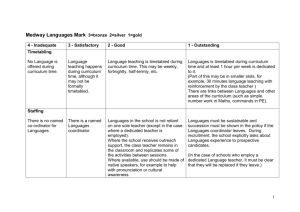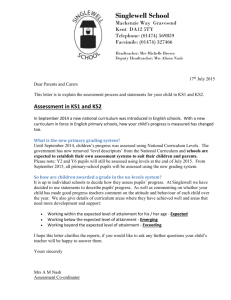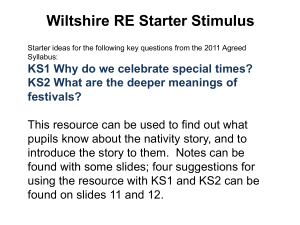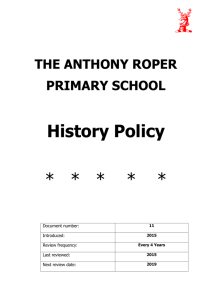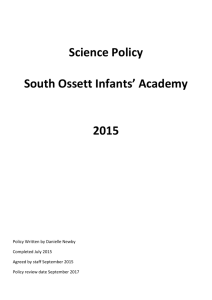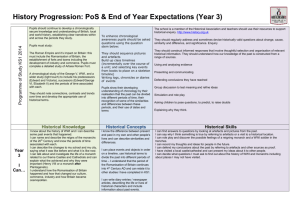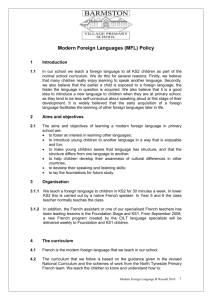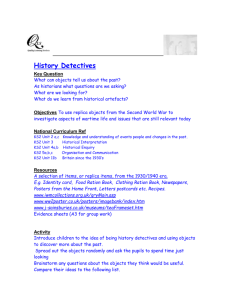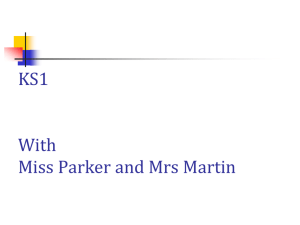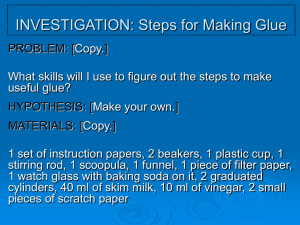shawlands primary school
advertisement
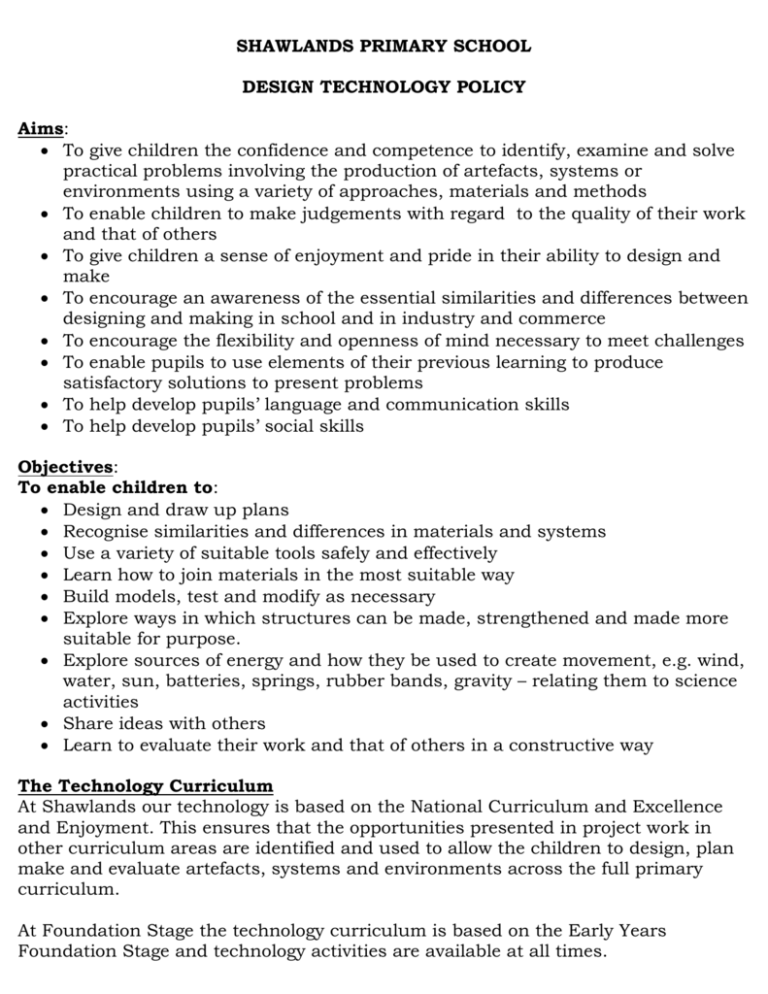
SHAWLANDS PRIMARY SCHOOL DESIGN TECHNOLOGY POLICY Aims: To give children the confidence and competence to identify, examine and solve practical problems involving the production of artefacts, systems or environments using a variety of approaches, materials and methods To enable children to make judgements with regard to the quality of their work and that of others To give children a sense of enjoyment and pride in their ability to design and make To encourage an awareness of the essential similarities and differences between designing and making in school and in industry and commerce To encourage the flexibility and openness of mind necessary to meet challenges To enable pupils to use elements of their previous learning to produce satisfactory solutions to present problems To help develop pupils’ language and communication skills To help develop pupils’ social skills Objectives: To enable children to: Design and draw up plans Recognise similarities and differences in materials and systems Use a variety of suitable tools safely and effectively Learn how to join materials in the most suitable way Build models, test and modify as necessary Explore ways in which structures can be made, strengthened and made more suitable for purpose. Explore sources of energy and how they be used to create movement, e.g. wind, water, sun, batteries, springs, rubber bands, gravity – relating them to science activities Share ideas with others Learn to evaluate their work and that of others in a constructive way The Technology Curriculum At Shawlands our technology is based on the National Curriculum and Excellence and Enjoyment. This ensures that the opportunities presented in project work in other curriculum areas are identified and used to allow the children to design, plan make and evaluate artefacts, systems and environments across the full primary curriculum. At Foundation Stage the technology curriculum is based on the Early Years Foundation Stage and technology activities are available at all times. At KS1 children follow the guidelines relating to designing skills, making skills and knowledge and understanding appropriate to the age and ability of the child. They are taught to evaluate their work and are encouraged to be conscious of health and safety implications. As children progress to KS2 the range of activities is broadened and reflects a developing skill and maturing critical awareness. The work in technology relates to other curriculum areas so that it enhances and broadens a project. At the beginning of each year teachers plan to ensure that AT1 (Designing) and AT2 (Making) are covered comprehensively during the year thus ensuring the whole of the National Curriculum is taught during KS1 and KS2. Safety in Technological Activities Children should handle suitable tools having regard to their age and experience. Children should be aware of and take responsibility for the tidiness of their work areas. Care should be taken: To teach the correct use of tools, including the boards to cut on To avoid the dangers associated with hot glue guns, sharp knives, saws, hammers, heat and wet floors To observe simple rules of hygiene To carry out risk assessments before each lesson Resources Available A basic tool kit and glue guns Wood, builders’ supplies of off-cuts and balsa Adequate supplies of paper, card, vivelle, tissue, crepe, glue, sellotape, gummed tape, staplers etc Junk modelling material Clay work equipment Baking equipment in the Staff Room cupboards – materials can be brought from home or purchased from School Fund for a specific activity. Preparation for baking is carried out in the Community/Dining Room and baked in the oven in the Staff Room. A small charge may be levied to contribute towards resources to enable children to take home their finished work. Spring 2012
